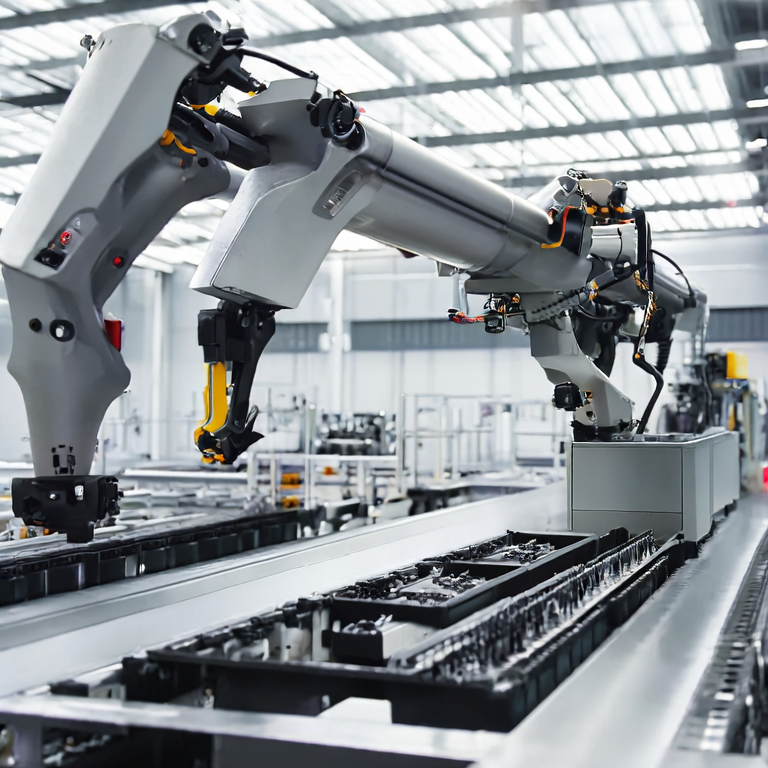In the rapidly evolving landscape of manufacturing, the emergence of robotic arm production lines signifies a breakthrough in automation efficiency, particularly in applications like automatic stamping manipulators. The significance of integrating robotic technology into production processes cannot be overstated. Industries face challenges such as increased labor costs, the need for higher accuracy, and a push for faster production times. Automatic stamping manipulators address these concerns by enhancing operational efficacy, driving productivity, and minimizing human error through precise execution.
Definition of Robotic Arm Production Lines and Automatic Stamping Manipulators
Robotic arm production lines typically utilize programmable robotic arms to handle materials, assemble components, and execute repetitive tasks with high precision. Automatic stamping manipulators are specifically tailored for operations that involve stamping mechanisms, providing swift, consistent, and accurate handling of materials. Terms like "articulated robotic arms," "end effector," and "programmable logic controller (PLC)" are vital in understanding these systems.
According to a report by the International Federation of Robotics, global sales of industrial robots reached 422,000 units in 2021, demonstrating a growing reliance on robotics technology across sectors.
Application Scenarios of Robotic Arm Production Lines
Robotic arm production lines equipped with automatic stamping manipulators find their application across various industries. These include:
Automotive Manufacturing: Automakers utilize robotic arms for stamping metal sheets into car parts, thereby increasing output and ensuring high-quality production.
Electronics Assembly: In electronics, robotic arms play a vital role in the assembly of components and the precision placement of delicate parts, minimizing the risk of damage and defects.
Food Packaging: In food processing, these systems ensure efficient packaging, maintaining hygiene standards while optimizing speed.
Advantages of Robotic Arm Production Lines
The advantages of incorporating robotic arm production lines are multifaceted:
Increased Speed: Measurements indicate that robotic systems can operate up to 300% faster than traditional assembly methods. This speed translates directly into increased production capacity.
Improved Accuracy: Robotic arms significantly reduce error rates. For instance, integrating advanced sensors can lower the error margin to less than 0.05%, ensuring every component is positioned flawlessly.
Labor Cost Reduction: With the automation of repetitive tasks, companies can reduce labor costs by an estimated 20%-30%. Automated systems also help alleviate the challenges associated with labor shortages in manufacturing.
Enhanced Safety: Automating high-risk processes minimizes workplace hazards, which can lead to a 50% reduction in workplace injuries related to manual handling.
Next Steps for Implementation
If you’re considering integrating robotic arm production lines into your operations, it\'s essential to conduct a thorough needs assessment. Begin by reviewing user guides and exploring resources like Fuxin Intelligent to understand the capabilities of their robotic solutions. Evaluate your current production processes to identify areas where automation can deliver the most significant impact.

FAQ
1. What is a robotic arm production line?
A robotic arm production line is an automated system that uses robotic arms to perform tasks such as handling, assembling, and processing materials within a manufacturing setting.
2. How does an automatic stamping manipulator work?
Automatic stamping manipulators function by utilizing robotic arms programmed to stamp materials with high precision, ensuring speed and accuracy during production.
3. What industries benefit most from these technologies?
Industries such as automotive, electronics, and food packaging significantly benefit from robotic arm production lines and automatic stamping manipulators due to their efficiency and precision.
4. How can I trial a robotic arm production line?
To explore the implementation of robotic technology, look into trial programs offered by manufacturers like Fuxin Intelligent, which can provide a hands-on approach to understanding these systems effectively.
In conclusion, robotic arm production lines and automatic stamping manipulators represent a significant advancement in manufacturing efficiency and quality. The transition towards automation promises considerable benefits, including reduced costs, enhanced safety, and improved productivity, making it a worthy investment for any forward-thinking manufacturing operation. For further understanding or a trial experience, consider reaching out to brands like Fuxin Intelligent for insights tailored to your specific needs.




